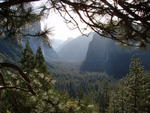WASHINGTON – With financial support from the National Park Service, universities, non-profit organizations, federal departments, and state agencies will seize time and bend it, looping the present and the future backward and applying them to the past.
Researchers at the University of Mississippi, for example, will receive $25,000 to digitally recover water-damaged manuscripts with a futuristically-named portable multispectral imaging lab. The same amount of money will go to the Smithsonian Institution’s National Air and Space Museum, where scholars will employ portable Raman spectroscopy to study windows and headgear in historic aircraft.
In all, $320,000 of federal grants recently gave historic preservation efforts a shot in the arm for technology and training. The grantees, selected by the National Center for Preservation Technology and Training—a National Park Service program based in Natchitoches, Louisiana—will develop and use technology, methods, and training materials for preservationists.
Jonathan Jarvis, director of the National Park Service, praised the award recipients. “They’re honing the skills and technology we have today,” he said, “and then deploying those skills and pieces of equipment to preserve the treasures of yesterday.”
Awards went to the following institutions, in addition to the University of Mississippi and the National Air and Space Museum:
Carlsbad Caverns National Park to test and augment new standards that will make Geographic Information Systems more useful for managers of cultural resources ($25,000).
Bandelier National Park to improve the method of repairing wooden structural beams within the park’s Civilian Conservation Corps National Historic District ($6,000).
University of Massachusetts to protect Gullah land and community through the development of a website for tourism, community planning, and education ($24,000).
Clemson University for structural health monitoring of America’s cultural heritage ($25,000).
Smithsonian Institution, Museum of Natural History to create a website and online community forum for Osteoware software ($20,000).
New York State Office of Parks, Recreation and Historic Preservation to evaluate nanoparticles (quantum dots) in order to tag and determine penetration depths of consolidant treatments ($25,000).
Carnegie Mellon University to develop a micro-fading tester with near UV capability ($25,000).
Massachusetts Department of Conservation and Recreation to create a Massachusetts heritage landscape atlas ($25,000).
Pennsylvania State University to develop techniques that incorporate air-coupled impact echo-methods and facilitate the assessment of historic concrete and masonry ($25,000).
Louisiana Landmarks Society for the development of the workshop “Preservation Reengineering: Finding Green Environmental Management in Vernacular Historic Buildings” ($25,000).
U.S. Department of Agriculture, Forest Service to develop a Preservation Protection of Historic Wooden Structures user guide and online tool ($25,000).
Library of Congress to further materials characterization techniques utilizing advanced spectral imaging methods ($20,000).
The award recipients can provide more information about their projects. The National Park Service, which awards the grants under Title IV of the National Historic Preservation Act, received 41 complete applications for funding. Proposals underwent peer review and national panel review, leading to the selection of the 14 awardees above.
The National Center for Preservation Technology and Training, which will administer the grants, creates technologies to preserve prehistoric and historic resources and develops training opportunities for preservationists. Since its founding in 1994, NCPTT has awarded over $7 million in grants for research that advances the use of science and technology in historic preservation.
Kinks in time funded by National Center for Preservation Technology and Training
All posts are those of the individual authors and the owner
of this site does not endorse them. Content should be considered opinion
and not fact until verified independently.
Sorry, only registered users may post in this forum.


